Search Results
Fine Jewelry University Articles matching: “14mm blue zircon”
Showing only FJU Article results. Click here to show all results.
Fine Jewelry University (Show All FJU Articles)
-
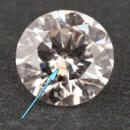
What Are Lab Grown Diamonds?
… that lies at the heart of our laser welder . The most popular diamond simulant by far today is synthetic Cubic Zirconia (CZ) . It is cheap to produce and sparkles very brilliantly. It is a great example of a synthetic gemstone that is a … confusion it can create. There is another diamond simulant that creates a lot of confusion. Diamond coated Cubic Zirconia (CZ) gems are produced using the same Chemical Vapor Deposition (CVD) technology that is used to produce lab grown …
-

How to Tell If a Diamond Is Natural or Lab Grown
… and synthetic diamonds before continuing with this article. So, now you know that lab grown diamonds are just as real as natural diamonds, but we still want to be able to tell them apart. When it comes to diamond simulants like Cubic Zirconia (CZ) or Moissanite, it is easy to identify them because they aren’t diamonds. But, with lab grown diamonds, the chemical structure and properties are all the same as natural diamond, so it becomes much more difficult to …
-
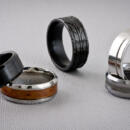
Alternative Metals for Men’s Jewelry
…Overall, ceramic jewelry is a great option with space-age tech for someone who wants a non-traditional wedding band. Zirconium Zirconium is a natural element which begins with a silver color. Zirconium is then heat treated and exposed which… feature in the jewelry world as most black metals are the result of plating or antiquing which fades overtime. Zirconium is currently the only permanently black jewelry that is workable enough to allow the setting of diamond or other gems…
-
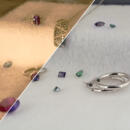
Gem in the Spotlight: Alexandrite
… most wavelengths of light very well, only transmitting green and red light. This means that depending on the light source the stone will reflect more of the accent colors of light. Since fluorescent light has a stronger greenish-blue component, the stone appears greener. Under candlelight, which has a much stronger red/orange component, the stone will appear redder. Alexandrite has a refractive index of 1.746-1.755 with an average birefringence of .010. It has a …
-

The Magic of Polarized Light
…, darken skies, and cuts out glare to help improve photo quality. Some filters can even be rotated on the lens to selectively see through the surface of water or only capture the reflection. Modern 3D movies: Unlike old school red and blue 3D movies, modern 3D uses two images along with a pair of glasses that have polarizing filters for lenses. This tricks your brain into thinking you are seeing a three-dimensional object using our perception of depth. Liquid crystal …
-
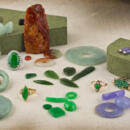
Gem in the Spotlight: Jade
…polish. Nephrite is commonly found in a darker olive green color but can also be very light green, orangey-red, black, and yellowish green. Jadeite can come in many different colors including pink, purple (often called lavender jade), blue, black, white, and the most valuable/desirable color: a vibrant green. The finest of all green jadeite colors is a saturated emerald green that is almost transparent, and it is called “Imperial Jade.” Jade is one of the top selling …
-

How Are Lab Grown Diamonds Made?
…gases and introduced into the diamond as it forms. With HPHT diamonds, it is very difficult to create truly colorless gems. This is because even the smallest presence of nitrogen or boron during the process can result in a yellow or blue color respectively. Both HPHT and CVD diamonds tend to exhibit strong and unusual fluorescence characteristics when compared to natural diamonds. This fact, while not generally detrimental to the appearance of the diamonds, is quite …
-
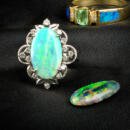
Gem in the Spotlight: Opal
…, you will get different colors. Opals can display just about every color of the rainbow, but hues of green and blue are the most common. Typically the higher end opals have a darker body color, and a wide range of colors. Red carries … orange body color, many of these stones have little to no play of color. The best stones have strong greens and blues that flash through the orange body color. Boulder Opal: Boulder opals are gem opal material that still incorporates …
-
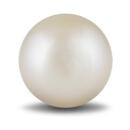
Gem in the Spotlight: Pearl
… Pearls: Also known as black pearls, Tahitian pearls are a type of saltwater pearl that are grown primarily in French Polynesia. They are known for their dark, rich colors, which range from dark green and gray to deep shades of blue and black. Tahitian pearls are generally large with an average size of 9mm to 18mm, and they commonly have baroque or irregular shapes. South Sea Pearls: Only a small percentage of oysters are able to produce these large, high-quality pearls…